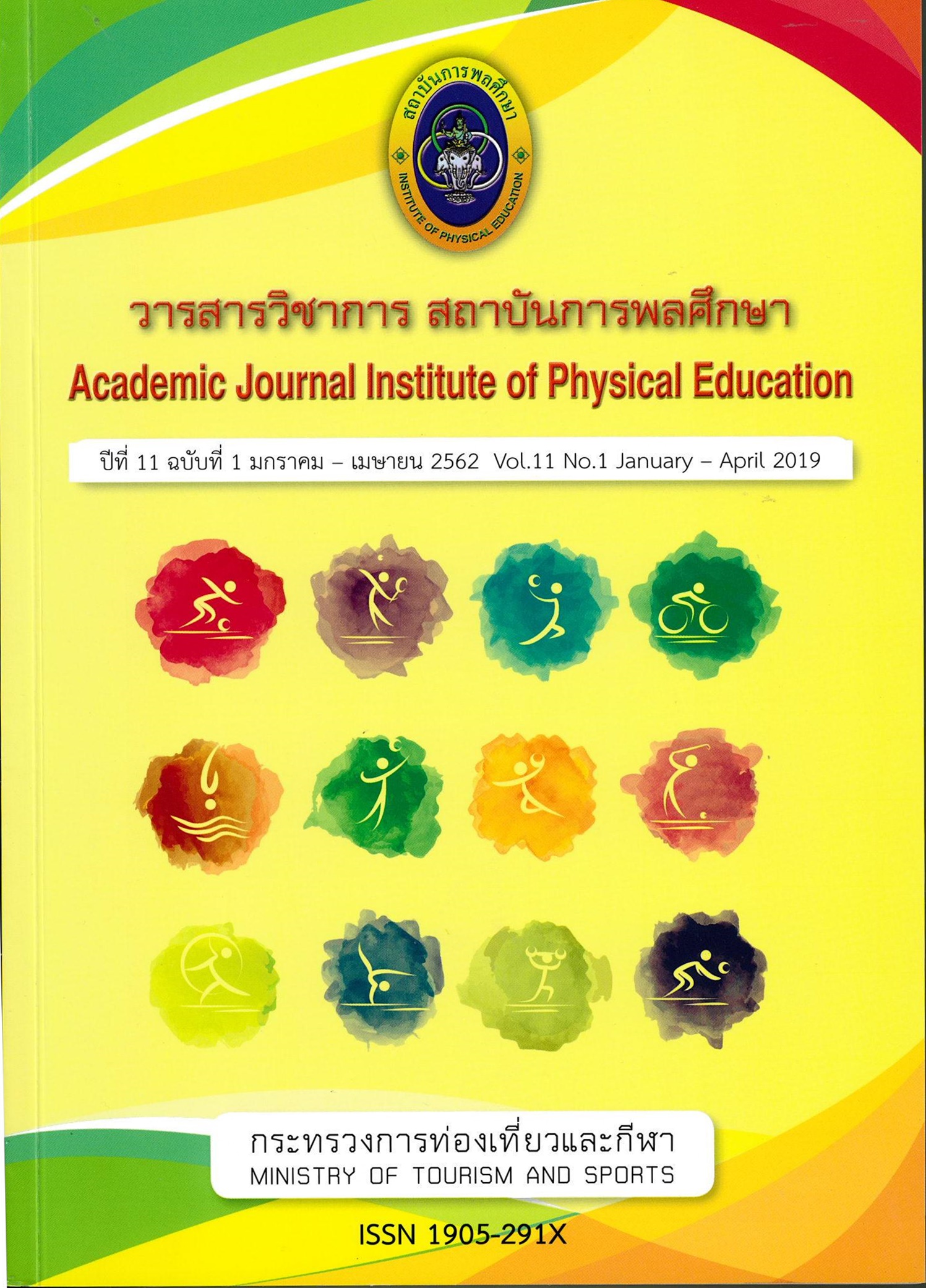THE COMPARATIVE OF PHYSICAL EXERCISE ON REDUCING THE PSYCHOLOGICAL STRESS OF STUDENT STUDYING ABROAD-A CASE STUDY OF CHINESE STUDENTS AT BURAPHA UNIVERSITY
Main Article Content
Abstract
The purpose of this study was to investigate the current state of physical exercise and psychological stress of Chinese students at Burapha University and to compare the effect of different levels of three indicators on the psychological stress of Chinese students. To provide Chinese students with an effective way to relieve psychological stress through physical exercise. Also, it also provides the reference for various universities to formulate programs to help overseas students release their psychological stress. This article will conduct research and analysis through literature review, questionnaire survey. The results of the study showed that: 1. Chinese students at Burapha University exercise 1-2 times a week for 21-30 minutes each time, with medium intensity. Students' psychological stress is at a low-stress level (60-70). 2. There was a significant difference between physical exercise frequency and psychological stress (P < .05). There was no significant difference in duration and intensity. Exercise more than 2 times a week, each time lasts 31-59 minutes, to maintain more than medium intensity, can relieve psychological stress.
Article Details
The published article is a copyright of the Academic Journal of Thailand National Sports University. The passage appeared in each article in this academic journal is a perspective of each author which is not related to the journal. Each author is required to be responsible for all components of his/her own article. If there are any mistakes, each author must be responsible for those mistakes on his/her own.
References
Colleen, W.; et al. (1998). The U-curve on trial: A Longitudinal study of psychological and sociocultural adjustment during cross-cultural transition. International Journal of Intercultural Relations. 22(3): 277-291.
McGuigan, F. J.; Sime, W. E.; & Wallace, J. M. (1989). Stress and Tension Control 3: Stress Management. New York: Plenum Press.
Mitsuhiro Amazaki. (2012). Development of the Risk Perception Scale: the Relationship between Risk perception and Amount of Physical activity. Aichi University journal of regional policy studies. 2(1): 19-24
Randall, M.; et al. (1998). Assessment of psychosocial stressors and maladjustment among foreign students of the University of the Ryukyus. Psychiatry and Clinical Neurosciences. 52(3): 289-298.


